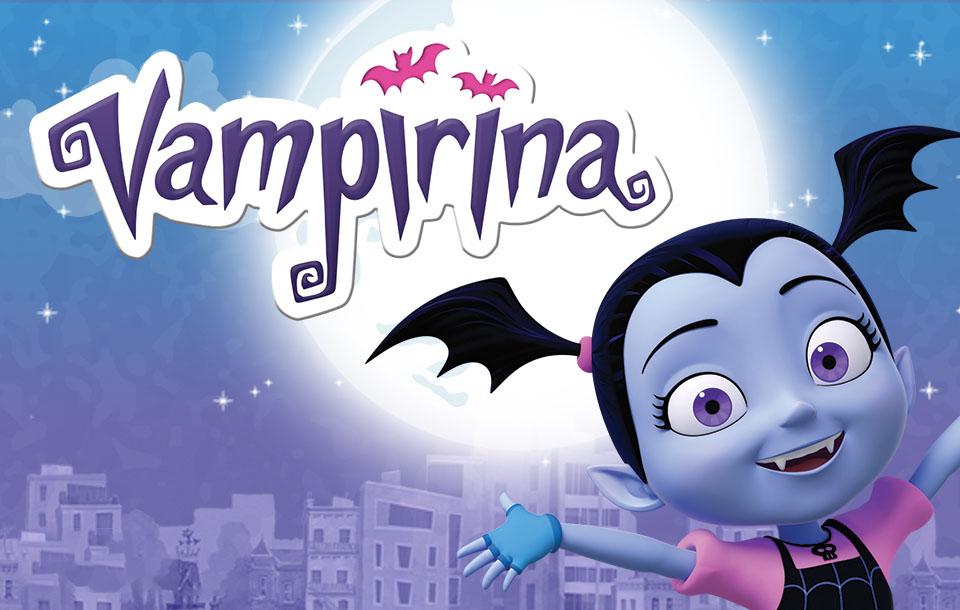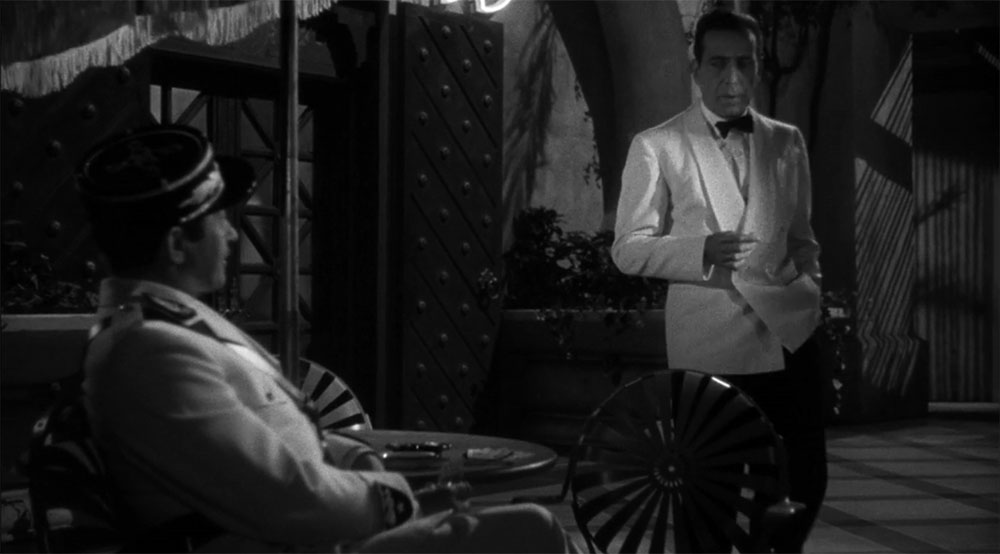Vampirina is childen’s television show created by Chris Nee for Disney Junior. Although based on the Vampirina Ballerina books by Anne Marie Pace, our focus today is strictly on the TV show (which is almost unrecognizably altered from its source material).
For reasons which are, as far as I can tell, never truly explained by the series, Vampirina and her family (vampires don’t drink blood and just have kids normally in this universe) decide to move from Transylvania to Pennsylvania and open a bed-and-breakfast for ghouls, goblins, and other creatures that go bump in the night.
STRUCTURE 1: GUEST OF THE WEEK
The central structure here is pretty straightforward: Each week a new monster (or group of monsters) shows up at the Scare B&B and they bring an adventure with them. This often takes the form of some sort of problem the guest is suffering from which Vampirina and her friends need to solve.
For example, in “Mummy Mayhem” a mummy sneaks out of the local museum for a vacation at the B&B. The museum believes the mummy to have been stolen and sends search parties to go looking for him. In “The Ghoul Girls” the Transylvanian girl group Scream Girls makes a pit stop on their tour and need an opening act.
It’s pretty easy to see how this structure can be adapted to any number of roleplaying games in which the PCs might end up in charge of an inn or similar establishment:
- In Over the Edge, it’s a seedy motel where each featured guests brings a little weird with them.
- In Vampire: The Masquerade, it’s a safe house for vamps passing through the area.
- In Stars Without Number, it’s a small space port where each adventure arrives in a ship.
This is good as far as it goes, but this is very much the exemplar of an incomplete game structure: Like a Mr. Johnson in Shadowrun or the briefing rooms of Paranoia, the “guest of the week” is a very flexible template for reliably delivering scenario hooks, but doesn’t really help you with the scenario itself. You still need to create that from scratch (presumably using other scenario structures).
Which is why Vampirina has a second episodic structure.
STRUCTURE 2: SECRET AT RISK
Other than a few close friends, the humans who make Pennsylvania their home cannot be allowed to find out that Vampirina, her family, or her guests are supernatural, and the series includes several characters (mostly neighbors) from whom this secret must be kept.
One way we could structurally implement this in a roleplaying game is to make a random check each time a PC or one of their guests exhibits supernatural abilities or properties to see if they’re at risk from a human. The key words here, however, are “at risk.” The result of this check should not be a human immediately seeing the supernatural manifestation. Instead, it should create a point of uncertainty: a crisis that has to be solved to prevent the human from discovering the truth.
This second structure largely completes the first one. As long as the guest is either innately supernatural (like a walking, talking mummy) or has some motivation for manifesting their supernatural abilities, the crisis points created by the second structure (combined with the solutions to those crisis points created by the characters, which may feature the use of supernatural abilities themselves, creating a cascade of trigger events) will innately create a complete scenario. You’ll probably want to play around a bit to figure out the right “pace” at which supernatural abilities trigger risk in order to create a satisfying adventure.
The episode “Dancelvania” is a pretty clear-cut example of this: A sleep-walking zombie shows up while Vampirina has some of her human friends over. The episode consists entirely of Vampirina and the other main characters (i.e., the PCs) trying to make sure that the zombie doesn’t expose himself.
Of course, you can also drape additional stories off of the visiting guests. Having a complete scenario structure isn’t a straitjacket that prevents you from having other content in your game after all.
Note, too, that this Secret At Risk structure isn’t the only way we could complete the Guest of the Week structure. Similarly, you could also take the Secret At Risk structure and pair it to a difference scenario hook.
PREP CHECKLIST
To use this scenario structure, you’ll need:
- The inn or similar facility where NPCs come to visit.
- The themed “secret” which needs to be kept and which the guests put at risk. (In Vampirina this is simply “the supernatural exists,” and this can work in any number of settings where the “masquerade” needs to be kept.)
- The guest for the current adventure, who should either inherently reveal the secret or have a motivation which will cause them to take actions which do so.
- A set of NPCs who can put that secret at risk.
And you should be good to go!
BEYOND THE BED & BREAKFAST
For an additional exercise, consider Rick’s Café Américain from Casablanca. This is a bar (and, shockingly, a “secret” casino) rather than a bed and breakfast, but the application of the structure is fairly straightforward. Although at the beginning of the movie Rick infamously “sticks his neck out for nobody,” slightly more proactive PCs could be confronted with a cavalcade of refugees seeking help (and usually having secrets which must be kept from the Nazis).
A similar example can be found in Spider Robinson’s Callahan’s Crosstime Saloon. Here the eponymous saloon is visited in each story by some strange creature or character out of speculative fiction. Often these visits are simply the framing device for the visitor to tell their story, but not always, with the visitor’s problems often following them into the saloon itself.
Callahan’s doesn’t particularly lend itself to the Secret At Risk structure, so it might be a good opportunity to think about what other structure(s) you might pair up with the Guest of the Week.
In the case of both Rick’s and Callahan’s, there’s a natural pairing with the Tavern Time™ system for fleshing out a wider cast of characters (including those who put the Secret At Risk if that applies).
For another example, consider the Continental Hotel from the John Wick movies. With a multitude of assassins constantly taking up residence, it feels as if the PCs filling Winston’s role as proprietor should be constantly intersecting various adventures. However, the rules of Continental more or less ban those adventures from actually crossing the threshold.
Is there a second structure we could implement that would resolve that? Or would we be better off with a completely different set of structures for a Continental campaign?

















Well, that’s a literary example that i think none of us saw coming.
This is excellent advice! I routinely mine my kids TV shows for inspiration – most children’s TV protagonists are horrifying if you extrapolate them far enough.
Haha, amazing initial example. I’ve heard of people using My Little Pony for ideas of how to structure campaigns, but never even heard of the show Vampirina!
With Ptolus recently releasing, I’d be interested on how a similar scenario structure could be used to create an Open Table in the city. My thinking is the Delver’s Guild, where this sort of “Problem of the Week” + “Tavern Time” = Dungeon Delving.
Do you think it is a good idea to have a varying Scenario Structure in an Open Table like this, where the players can do Dungeoncrawls, Mysteries, Heists, Raids, Race to the Prize, McGuffin Keep-Away… or do you think an Open Table would benefit from a more narrow focus on a specific structure?
I see that you have a toddler as well. Kids TV shows often use formulaic scripts (the most famous being the Monster of the Week) but I had never put much thought on how to adapt other models for RPGs. As aways, that’s a great insight. Thanks, man. Keep being awesome!
Great idea – seems like a perfect tool to employ in my Waterdeep: Dragon Heist campaign.
Tavern visitor offloads their problems to the barman (our rogue PC), and there we go… adventure hook delivered.
Love it, stealing it.
@Oniguma:
Episodic TV series (especially the now old school/only for kids shows with many stand-alone episodes) are actually better guidance for how to structure adventures specifically for open table play, because they preserve the status quo.
In the same way an open table needs to serve up adventures to new players every evening without requiring them to know what happened before, TV episodes are self-contained for equally easy entry for new viewers.
We could do the same analysis shows not aimed at kids. Like for example Star Trek or Stargate, both of which have similar “planet of the week” hook delivery structure that is analogous to the “guest of the week” outline above, but of course differ in what their other, secondary structure is (if there even is one common to all episodes)
“In Stars Without Number, it’s a small space port where each adventure arrives in a ship.”
So Season One of Deep Space Nine then.
The Callahan’s version seems like it would pair well with a rival establishment that wants to disrupt your business or poach your customers or discredit you. I’m thinking of Jaime’s tavern in _God Stalk._ The one hazard is that you need to set up, and clearly signal, that “slaughter the rivals to the last man” is not a workable strategy.
I think that making the PCs responsible or invested in a particular status quo that they must preserve is a more general reading of the “secret at risk” secondary structure.
If the scenario is such that the PCs ownership/stewardship/control of the “inn” depends on a tenuous set of broader circumstances (“if war breaks out, our spaceship will no longer be a safe haven in neutral territory”, “if we don’t keep the trade route along the mountains open, the duchess will reclaim the inn’s estate for herself”), then they should be immediately invested in preserving that status quo. Every guest of the week, then, might present a threat to that status quo, but is also a customer that should be appeased – so trying to casually get a beat on every guest of the week should be the first default action.
For the GM, he just needs to figure out how the guest, deliberately or by happenstance, will threaten the status quo. The mystery structure should work well as the default structure until the players figure out what this threat is; the structure used to neutralize the threat will vary, though.
Other general structures might help flesh out this further, too. A simple structure for managing a business (making sure your earnings cover all your expenses, maybe the potential for investing profits into upgrades to the “inn”) would probably work for some versions of this scenario, and having the guest of the week potentially interact with this system (a rich patron that could offer a big payday, the health inspector who might issue a huge fine) could offer variety and depth to their formula as threats to the status quo.